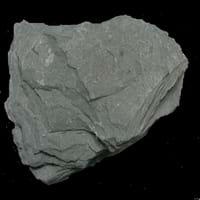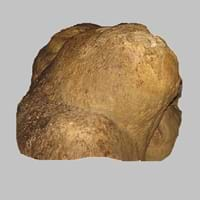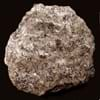Definition
Slate is a fine-grained, foliated, homogeneous metamorphic rock derived from an original shale-type sedimentary rock composed of clay or volcanic ash through low-grade regional metamorphism
Travertine is a mineral consisting of layered calcium carbonate formed by deposition from spring waters
Discoverer
Unknown
Marcus Vitruvius Pollio
Etymology
From Old French esclate, from esclat (French éclat)
From Italian travertino a kind of building stone, from Tiburs, adjective from Tibur (Tivoli), in Italy
Class
Metamorphic Rocks
Sedimentary Rocks
Sub-Class
Durable Rock, Medium Hardness Rock
Durable Rock, Medium Hardness Rock
Group
Not Applicable
Not Applicable
Other Categories
Fine Grained Rock, Opaque Rock
Fine Grained Rock, Opaque Rock
Color
Black, Brown, Buff, Green, Light to Dark Grey, Purple, Red, Shades of Blue
Beige, Black, Blue, Brown, Grey, Red, White, Yellow
Durability
Durable
Durable
Scratch Resistant
Yes
Yes
Interior Uses
Bathrooms, Decorative Aggregates, Entryways, Floor Tiles, Flooring, Homes, Hotels, Interior Decoration, Kitchens, Stair Treads
Decorative Aggregates, Entryways, Flooring, Homes, Interior Decoration
Exterior Uses
As Building Stone, As Facing Stone, Garden Decoration, Paving Stone
As Building Stone, As Facing Stone, Paving Stone, Garden Decoration, Office Buildings
Other Architectural Uses
Curbing
Curbing
Construction Industry
As Dimension Stone
As Dimension Stone, Building houses or walls, Cement Manufacture, Construction Aggregate, for Road Aggregate, Raw material for the manufacture of mortar
Medical Industry
Not Yet Used
Not Yet Used
Antiquity Uses
Artifacts, Monuments, Sculpture, Small Figurines
Artifacts, Jewellery, Monuments, Sculpture, Small Figurines
Commercial Uses
Blackboards, Commemorative Tablets, Laboratory bench tops, Standard material for the bed of Billiard table, Standard material for the beds of Pool and Snooker table, Tombstones, Used in aquariums, Writing Slates
Cemetery Markers, Creating Artwork, Gemstone, Jewelry, Paper Industry, Pottery
Types
Not Available
Not Available
Features
Easily splits into thin plates, Surfaces are often shiny, Very fine grained rock
Stalactites and stalagmites are formed from this rock, Surfaces are often shiny, Very fine grained rock
Archaeological Significance
Famous Monuments
Data Not Available
Colosseum in Rome, Italy, Sacré Coeur in Paris, France, Trevi Fountain in Rome, Italy
Famous Sculptures
Data Not Available
Data Not Available
Formation
Slate is a low grade metamorphic rock that is generally formed by metamorphosis of mudstone or shale, under relatively low pressure and temperature conditions.
Travertine is a type of sedimentary rock formed when a river carries or transports pieces of broken rock which then undergo sedimentation. They are then subjected to high temperature and pressure hence forming travertine rock.
Mineral Content
Apatite, Biotite, Chlorite, Feldspar, Graphite, Hematite, Kaolinite, Magnetite, Pyrite, Tourmaline, Zircon
Calcite, Clay, Feldspar, Micas, Quartz
Compound Content
Aluminium Oxide, CaO, Iron(III) Oxide, Potassium Oxide, MgO, Sodium Oxide, Silicon Dioxide, Titanium Dioxide
Ca, NaCl, CaO, Oxygen
Types of Metamorphism
Burial Metamorphism, Cataclastic Metamorphism, Regional Metamorphism
Not Applicable
Types of Weathering
Biological Weathering, Chemical Weathering, Mechanical Weathering
Biological Weathering, Chemical Weathering, Mechanical Weathering
Types of Erosion
Coastal Erosion, Glacier Erosion, Water Erosion, Wind Erosion
Chemical Erosion, Coastal Erosion, Glacier Erosion
Grain Size
Very fine-grained
Fine Grained
Fracture
Splintery
Splintery
Streak
Light to dark brown
White
Porosity
Less Porous
Highly Porous
Luster
Dull
Dull to Pearly
Cleavage
Slaty
Non-Existent
Specific Gravity
2.65-2.8
1.68
Transparency
Opaque
Opaque
Density
2.6-2.8 g/cm3
2.71 g/cm3
Resistance
Heat Resistant, Impact Resistant, Pressure Resistant, Wear Resistant
Impact Resistant, Pressure Resistant, Wear Resistant
Deposits in Eastern Continents
Asia
China, India, Turkey
China, Russia
Africa
Not Yet Found
Not Yet Found
Europe
Belgium, France, Germany, Italy, Norway, Portugal, Spain, United Kingdom
Austria, Italy, Portugal, United Kingdom
Others
Arctic
Not Yet Found
Deposits in Western Continents
North America
USA
Canada, USA
South America
Brazil
Argentina, Bolivia, Ecuador
Deposits in Oceania Continent
Australia
Not Yet Found
Not Yet Found
All about Slate and Travertine Properties
Know all about Slate and Travertine properties here. All properties of rocks are important as they define the type of rock and its application. Slate belongs to Metamorphic Rocks while Travertine belongs to Sedimentary Rocks.Texture of Slate is Foliated whereas that of Travertine is Banded. Slate appears Dull and Travertine appears Fibrous. The luster of Slate is dull while that of Travertine is dull to pearly. Slate is available in black, brown, buff, green, light to dark grey, purple, red, shades of blue colors whereas Travertine is available in beige, black, blue, brown, grey, red, white, yellow colors. The commercial uses of Slate are blackboards, commemorative tablets, laboratory bench tops, standard material for the bed of billiard table, standard material for the beds of pool and snooker table, tombstones, used in aquariums, writing slates and that of Travertine are cemetery markers, creating artwork, gemstone, jewelry, paper industry, pottery.









